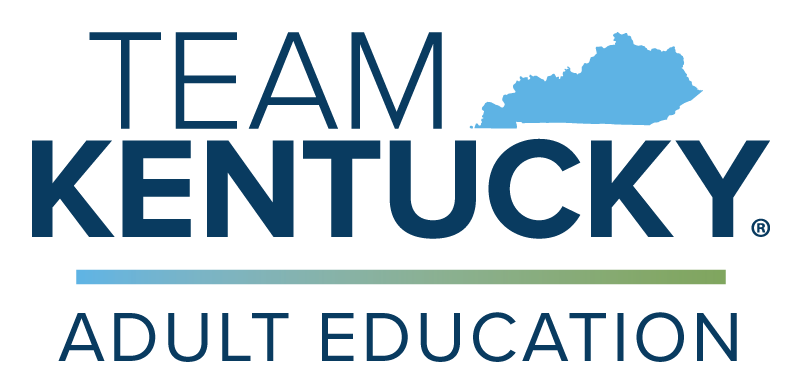GED®
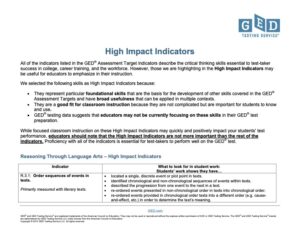
GED® High Impact Indicators (HII) represent foundational skills that have a broad usefulness across contexts and content. While instruction in HII may quickly impact student test performance, they are NOT more important that the rest of the indicators.

This GED® Testing Service document shows the relationship between the High Impact Indicators and other content indicators assessed on the GED® test. Adult educators can use this resource to create instructional plans addressing multiple skills in a concentrated time.
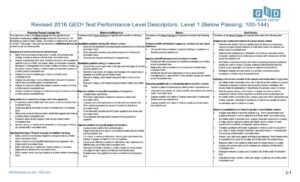
Performance Level Descriptors explain the skills a student demonstrates in each performance level on the GED® test and the GED Ready® practice test. The four performance levels are Below Passing (1), Passing for High School Equivalency (2), GED® College Ready (3), and GED® College Ready + Credit (4).
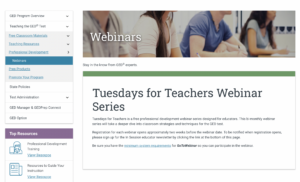
Tuesdays for Teachers is a free professional development webinar series designed for educators. This bi-monthly webinar series will take a deeper dive into classroom strategies and techniques for the GED test. Registration for each webinar opens approximately two weeks before the webinar date.

Recent GED® graduate Alice gives you an overview of what to expect on the GED® Reasoning Through Language Arts Extended Response Test. Watch this 8-episode series with your students to take a deeper dive into the skills and expectations that will help students excel on their written responses.
Corrections

As part of the professional learning process, instructors create streamlined lesson plans related to the focus of their specific PL electives. This page contains those streamlined lesson plans for Effective Instruction in a Corrections Setting (FY2019).
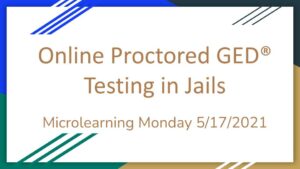
This session, co-facilitated by GEDTS, OAE, and local provider network staff, provides insights into the challenges of and strategies for Online Proctored GED® (OP GED®) testing in jails. The slide deck can be found here.

This professional learning elective, co-facilitated by Susan Pittman, Kathryn Gagel, and KY DOC staff, provides an orientation to KY DOC programs, processes and incentives. The session also features an explanation of distinctions between KYAE and KY DOC services; foundational reading and math instructional strategies; best practices from the field; and foundational training on integrating edtech into Corrections using Brainchild Study Buddies. Find all resources, including slide deck, in the course instructional resource folder.
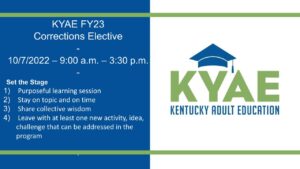
This professional learning elective, facilitated by Susan Pittman, featured contextualized Corrections mathematics instructional strategies. In the course resource folder, you can find the slide deck, and the course resource guide, among other resources.
The Corrections Student Tracking Form was developed by the FY22 Statewide Corrections PLC to assist local providers in tracking student progress and resource types used/associated with student performance.
This Corrections Student Tracking Spreadsheet was developed by Somerset Community College Corrections Instructor, George Rodgers. It was developed to help Corrections Instructors keep track of various student metrics specific to Corrections instructional settings. Find the key to the spreadsheet codes and abbreviations here.
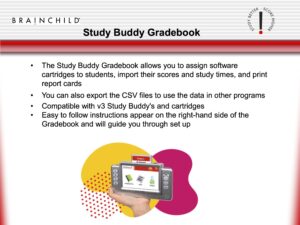
Brainchild Study Buddies are one of few Corrections-approved edtech options. KYAE providers have reported success with using Brainchild’s gamified approach to GED® prep in a variety of Corrections settings. This folder contains several resources related to Study Buddy curricula and use.
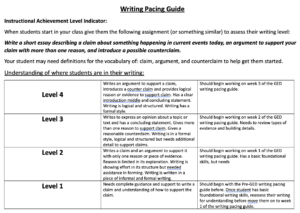
This Federal Bureau of Prisons Writing Pacing Guide, designed by Susan Pittman, contains pre-GED® and GED® writing instructional resources. It also provides an overview of the types of writing students should complete at various NRS Levels.
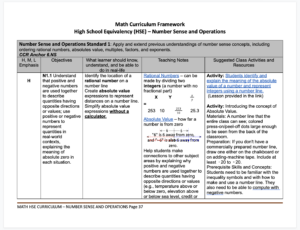
This Federal Bureau of Prisons HSE RLA and Math Curriculum Framework was inspired by the KYAE Instructional Framework Series. It contains standard-aligned, Corrections-approved instructional resources including objectives, teaching notes, and links to suggested class activities.

As part of his participation in the KYAE/KY DOC Statewide Corrections PLC, Charles Kahn of KY DOC’s Northpoint Training Center, shared an array of PPT-based instructional resources. This collection includes instructional strategies and activities for math, reading, grammar, and social studies.
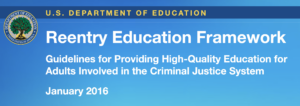
The LINCS Reentry Education Framework Report presents an approach for reentry education providers to develop an education continuum that strengthens their services and bridges the gap between facility- and community-based services.
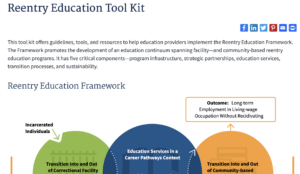
This tool kit offers guidelines, tools, and resources to help education providers implement the Reentry Education Framework.
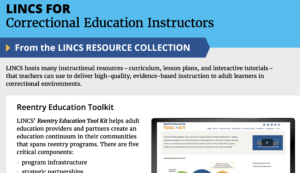
This flyer highlights resources of interest to Corrections and reentry education instructors and stakeholders.
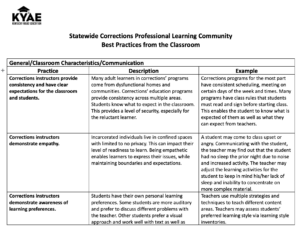
This document contains a collection of Corrections instructional best practices shared by KYAE and KY DOC participants in the FY23 Statewide Corrections PLC during their first formal meeting of the year.
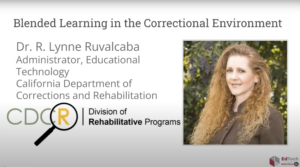
This YouTube recorded webinar from World Education features Dr. R. Lynne Ruvalcaba from the California Department of Corrections and Rehabilitation and explores why to use technology in the context of Corrections, what some challenges to using tech in that space are, and how CDCR actually implements blended learning.
Kentucky Education Television

The topics found in this collection include instructional resources designed specifically for the adult education field.
Resources in this collection include videos, printable handouts, and self-paced lessons. Learners can study math, reading, and critical thinking skills, and find materials to help them prepare for their high school equivalency tests.
